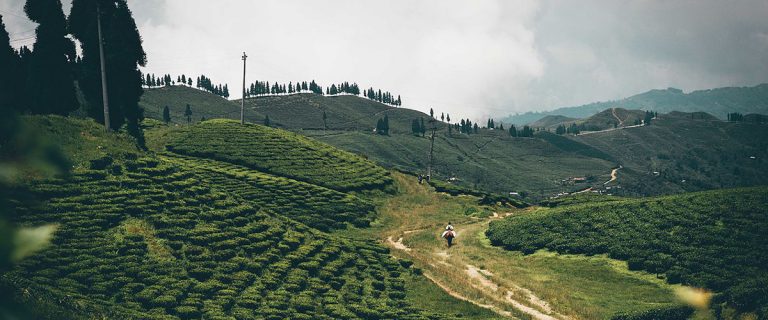Nepal is located in the Himalayan range, bordered to the north by China and to the south by India. Here, orthodox tea is produced and processed at an altitude ranging from 1000-2500 metres above sea level, while CTC tea is produced at lower altitudes, in the more fertile tropical plains.
Nepal’s tea history
Nepal is a relatively young tea growing country, and it’s believed that the first tea bushes were a gift to Nepal’s Prime Minister Jung Bahadur Rana by a Chinese Emperor. Another story is that in 1863, Colonel Gajraj Singh Thapa, son-in-law of Jung Bahadur Rana visited Darjeeling and tasted the tea. Apparently, he loved it so much that he decided to set up estates in his country – and that’s how the first tea gardens of Nepal were born – the first at Ilam and two years later, in Soktim. While the tea estates in Ilam were used to grow orthodox tea, Soktim’s gardens produced CTC tea.
It doesn’t really matter which of these stories is really true and how Nepal started to grow its fine Nepalese tea; what counts is that today Nepal has over 85 plantations that produce large quantities of a delicate, superior and aromatic tea that holds its own against the best in the world.

Initially, Nepal’s teas went into compensating the Darjeeling tea’s quality and volumes. But from 1978, when Ilam set up its own factories for processing tea, a stagnant industry began to show signs of revival.
By 1982 Nepal had started to produce its own fine quality tea, and the five districts of Ilam along with Jhapa, Dhankuta, Terhathum and Panchthar were declared as the ‘Nepal Tea Zones’ by Birendra Bir Bikram Shah Dev, the King of Nepal at the time. In the last decade of the 20th century, independent organizations came forward to improve and refine the Nepalese tea, and helped create a commercially viable industry.
Though Nepal Tea was introduced to the world much after Darjeeling tea, it is one of the finest in the world today and manages to stand out for its colour, fusion, taste and aroma.
Nepal’s tea industry today
Today, more than 16,000 hectares of the hilly regions in Nepal are dedicated to growing tea. There are six major regions which produce the orthodox variety of tea: Ilam, Panchthar, Dhankuta, Terhathum, Sindhulpalchok, and Kaski. About 15% of total production of teas in the country is of the orthodox variety while some green, white and oolong are also produced.
What to expect from the Nepal tea
The eastern tea-growing region of Nepal borders the Darjeeling district of India, and enjoys a climate similar to one found in Darjeeling tea growing region. So, teas from this region are thought to be close cousins to the Darjeeling tea, both in flavor and aroma.
Orthodox Tea – The areas that grow Orthodox Nepal tea are Dhankuta, Terathum, Panchthar, Ilam, Kaski and Sindhupalchok. While the black tea produced here is much like a Darjeeling black, it is a more delicate variety because the tea bushes are far younger and have better quality leaves thanks to the more amicable climate of the Eastern hills of Nepal. These are premium teas, exported at high prices, and an important source of income.
CTC Tea – 90% of all tea consumed in Nepal is CTC tea. This is an average quality tea, nowhere near the Orthodox tea, but offers livelihood to many people by becoming an important employment source. This is not the tea you find in gourmet stores at home labelled as ‘Nepal Tea’, but this will most probably be the tea you are offered everywhere if you ever visit Nepal.
How Nepal’s tea industry has come out of Darjeeling’s shadow by Peter GW Keen

Comments are closed.